|
Diseases of Poultry
By Ivan Dinev, DVM, PhD
|
GANGRENOUS DERMATITIS
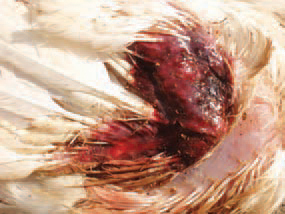
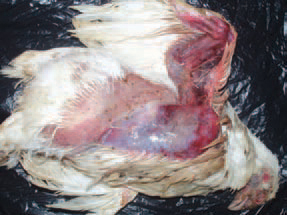
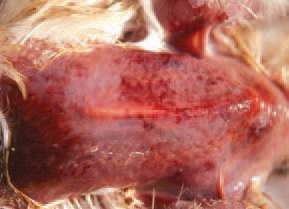
148.149.150.The gangrenous dermatitis (GD) is a disease affecting fattening and growing birds, characterized with necrotization of different skin areas and a severe cellulitis of the subcutaneous tissue. The sudden and quick increase in death rates is often the first signal for the incidence of GD. The affected birds die after less than 24 h. The death rate is from 1% to 60%. The lesions are dark red to blue green macerated skin areas, usually featherless, beginning generally from wings and the adjacent areas.
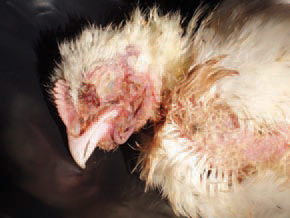
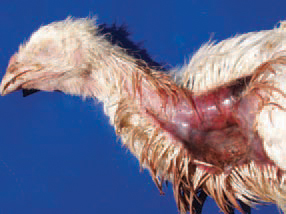
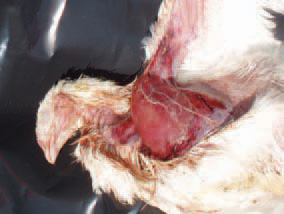
151.152.153.. Most outbreaks are encountered in broilers at the age of 4 - 8 weeks. The disease is also observed in stock layer hens at the age of 6 - 20 weeks and broiler parents at the age of 20 weeks. The outbreaks are frequently observed in extremely wet and warm premises. The gangrenous dermatitis affects birds while still alive. In more s evere cases, the gangrene could begin and involve the skin of the head, neck and the breast. Affected skin is macerated or totally necrotic, resulting in exposure of underlying tissues in a number of cases.
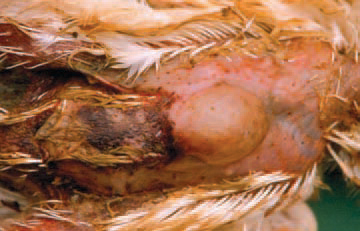
154.The GD agents are CI. septicum, CI. perfringens type A and Staphylococcus aureus, independently or in combination. The associated infection is more severe. The skin lesions are often crepitating and are detected in the regions of breast, abdomen, back or wings in both alive and dead birds.
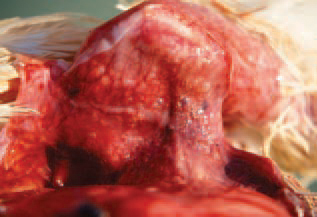
155.Under the affected skin, extensive haemorrhagic oedemas with or without gas (emphysema) are discovered. The Clostridia are encountered in soil, faeces and the intestinal content. Staphylococci usually inhabit the skin and mucous coats of birds
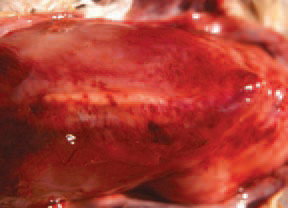
156.Underlying muscles are haemorrhagically infiltrated and also could contain gas among the muscle fibres. The increased susceptibility of birds to GD is related to immunodeficiency states secondary to CIA, IBD, IBH etc. Other predisposing factors are aflatoxicoses, the unbalanced or deficient diet or poor hygiene. The skin wounds are the entrance door of the infection.
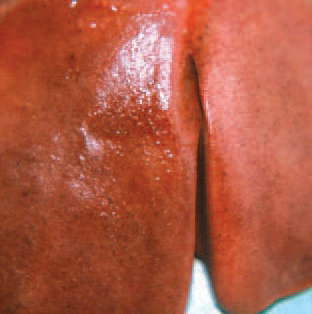
157.In most cases, no changes in viscera are observed. Rarely, gas bubbles could be found out in the liver. The diagnosis is confirmed by imprint preparations or histological cross sections. The bacterial agent could be isolated from cellulitic zones.
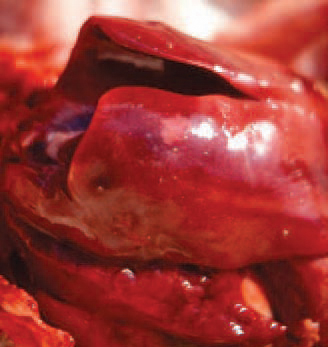
158.Single or multiple necroses are rarely seen in the liver. Prevention - the factors leading to skin injuries (cannibalism, mechanical traumas etc.) should be minimized. Successful approaches are the immunoprophylaxis programmes in breeder flocks aiming at prevention and reduction of possible immuno-suppressive states.
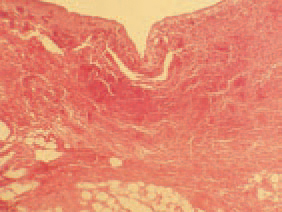
159.Microscopic lesions are characterized by oedema, emphysema, hyperaemia, haemorrhages and necroses in the subcutaneous tissues. GD could be effectively treated by tetracyclines: doxyxycline hydrochloride, erythromycin thiocyanate, chlortetracycline and copper sulfate in the water.
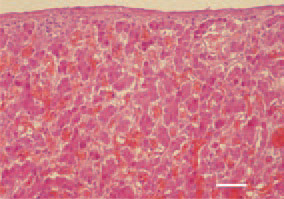
160.






